Table Of Contents
What Is Elastic Tape?
Elastic tape is a narrow woven or knitted fabric designed to stretch and return to its original shape. Most of the time, it’s made of elastomeric fiber like spandex. It quietly holds waistbands, cuffs, and lingerie in perfect tension. Technically, it combines elastic yarns like spandex, rubber, or latex with textile fibers such as polyester or cotton for strength and comfort.
Composition and Characteristics
Common Materials Used
Most elastic tapes contain a blend of synthetic and natural materials. The elastic core usually consists of spandex (50–90%) or rubber threads, wrapped with polyester, nylon, or cotton for durability. Some high-performance elastic tapes include latex-free options for allergy-free garments.
Key Properties That Make Elastic Tape Unique
- Excellent elasticity: Can stretch up to 200–250% of its length.
- High recovery rate: Returns to its shape after long wear.
- Durability: Withstands multiple washes without losing elasticity.
- Soft touch: Comfortable next to skin, crucial for lingerie and sportswear.
- Resilience: Maintains tension under stress.
Major Types of Elastic Tape
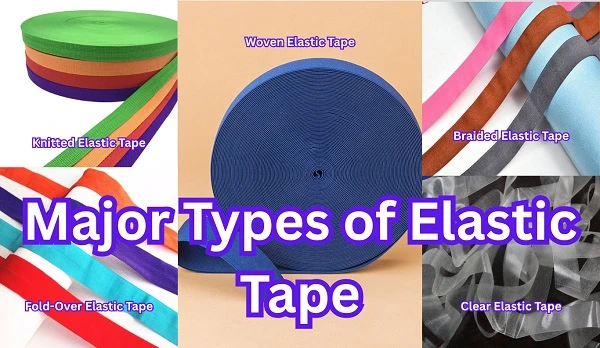
Elastic tapes vary widely depending on how they’re manufactured and where they’re used. Let’s break down the main types.
1. Woven Elastic Tape
Woven elastic is the strongest type. It doesn’t narrow when stretched, making it ideal for waistbands, belts, and heavy-duty garments.
2. Knitted Elastic Tape
Knitted elastic feels soft and lightweight. It’s breathable and perfect for underwear, babywear, and light sportswear. Because of its structure, it stretches more freely but may curl over time.
3. Braided Elastic Tape
Braided elastic features a ribbed texture and narrows when stretched. It’s the most common and affordable option, used in masks, cuffs, and DIY projects. Statistically, over 60% of sewing hobbyists prefer braided elastic due to its versatility.
4. Fold-Over Elastic Tape
Fold-over elastic (FOE) has a shiny surface and folds neatly over fabric edges. It’s widely used in lingerie, activewear, and baby headbands. The smooth finish prevents irritation and gives garments a polished edge.
5. Clear Elastic Tape
Made from polyurethane, clear elastic tape is transparent and lightweight. It’s used in swimwear, necklines, and seam reinforcement. Its invisible finish makes it a fashion favorite for designers.
Applications of Elastic Tape in Garment Industry
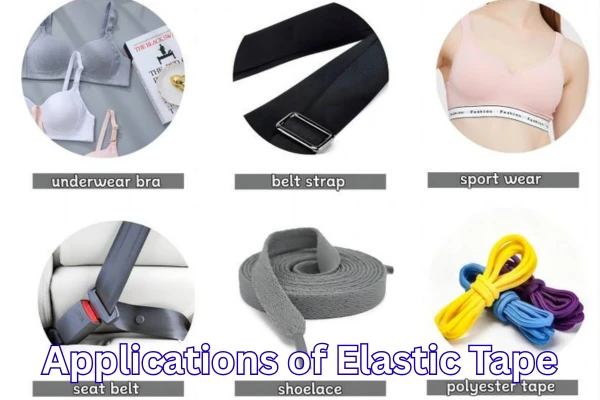
Use in Apparel and Sportswear
Elastic tape holds everything together. You’ll find it in:
- Waistbands: In jeans, trousers, and skirts.
- Cuffs and hems: Keeps sleeves snug.
- Sportswear: Provides flexibility and support.
A 2023 fitness garment study showed that elastic-enhanced leggings improved comfort by 40% compared to non-elastic fabrics.
Medical and Healthcare Applications
Elastic tape also plays a vital role in:
- Compression bandages and knee supports.
- Medical braces and orthopedic belts.
It's a controlled stretch that aids blood circulation and healing.
Industrial and Home Textile Uses
Elastic tape isn’t limited to fashion. It’s found in:
- Automotive interiors, for tight-fit upholstery.
- Furniture covers and fitted sheets.
- Safety gear, like gloves and vests.
Quality Parameters and Testing of Elastic Tape

Stretch and Recovery Test
Elastic tape must stretch smoothly and recover fully. Typically, a 100 mm sample is stretched to 150 mm, then checked for recovery rate. It is an ideal tape should recover 90–95% of its length.
Width, Tensile Strength, and Durability Check
Widths range from 5 mm to 100 mm, and tensile strength tests ensure the tape can handle 3–5 kgf/cm without deformation.
Shrinkage and Wash Performance
Good-quality elastic should show less than 3% shrinkage after five washes.
Advantages and Limitations of Elastic Tape
Benefits
- Enhances garment comfort and flexibility.
- Improves fit and shape retention.
- Lightweight and easy to sew.
- Suitable for both industrial and home use.
Common Challenges
- Elastic degradation due to heat or chlorine.
- Latex allergies in some consumers.
- Loss of elasticity over extended use.
How to Choose the Right Elastic Tape
Factors to Consider for Different Garments
- Elastic Type: Woven for structure, knitted for softness.
- Width: Wider tape offers more support.
- Composition: Latex-free for sensitive skin.
- Recovery Rate: Must exceed 85% after repeated stretching.
Tips from Textile Technologists
Experts suggest pre-washing elastic tape before sewing to prevent shrinkage. Also, avoid high-heat ironing, it can damage the elastic core.
Conclusion
Elastic tape might look simple, but it’s the backbone of garment flexibility. From gym shorts to medical braces, it’s everywhere to add comfort, shape, and stretch.
FAQs
1. What materials are used to make elastic tape?
Elastic tape usually combines spandex, rubber, or latex with polyester, nylon, or cotton.
2. Which type of elastic tape is best for waistbands?
Woven elastic tape offers the best durability and stability for waistbands.
3. How do you test elastic tape quality?
Through stretch and recovery tests, tensile strength checks, and wash durability assessments.
4. Can elastic tape cause allergies?
Yes, latex-based tapes can cause allergies. Latex-free options are available for sensitive users.
5. What’s the difference between knitted and braided elastic tape?
Knitted elastic is soft and breathable, while braided elastic is firm and tends to narrow when stretched.


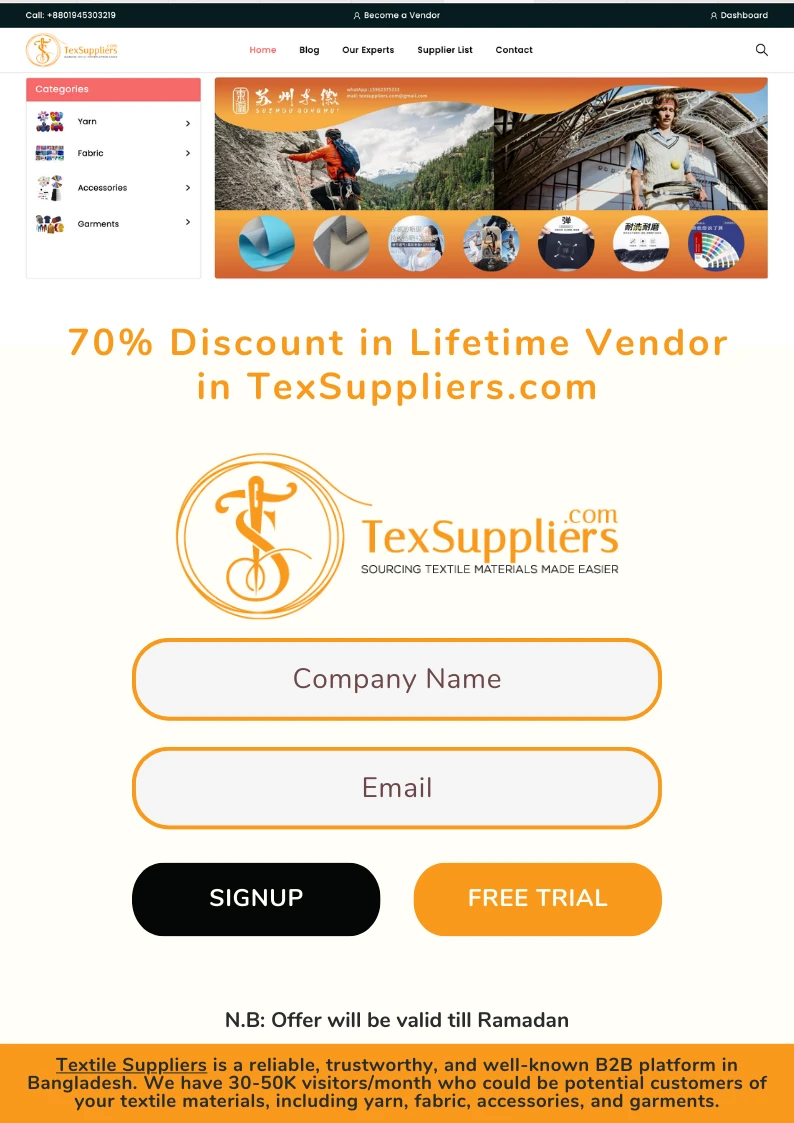


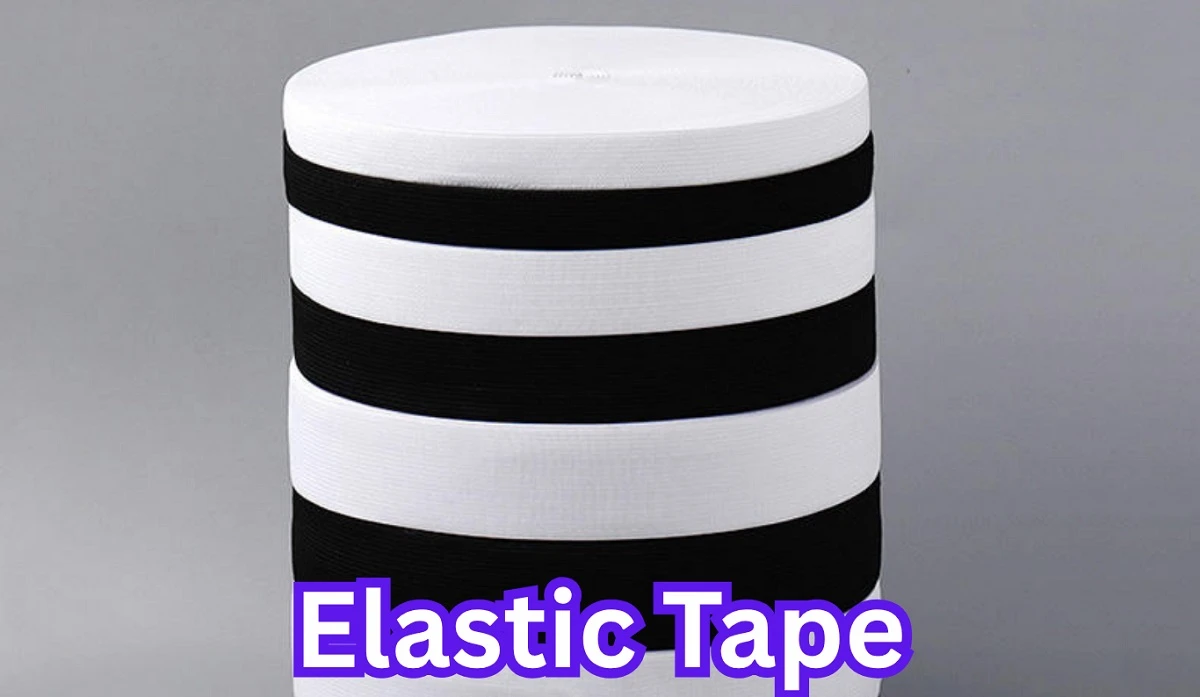
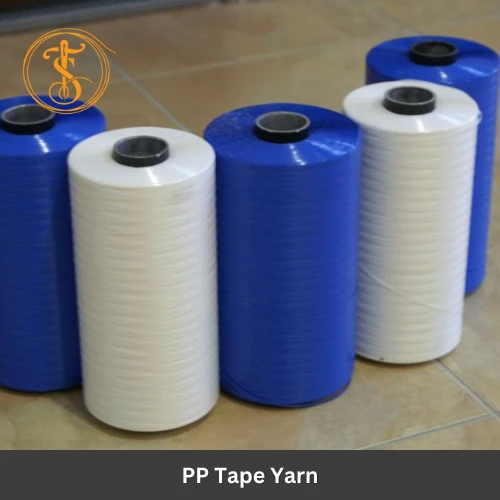
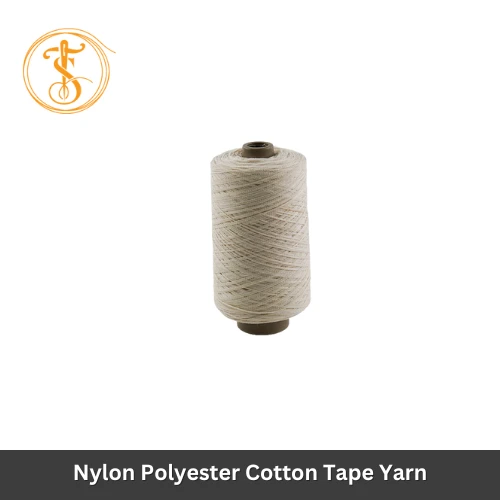
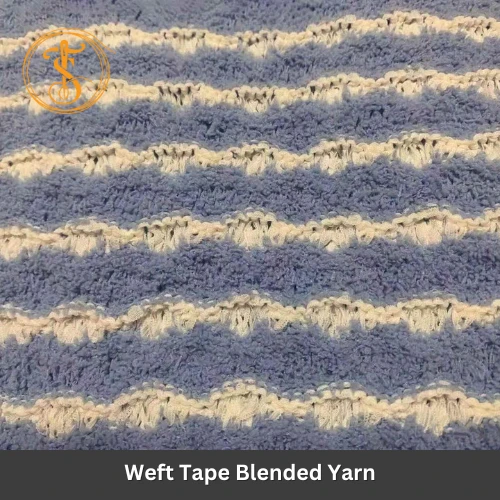
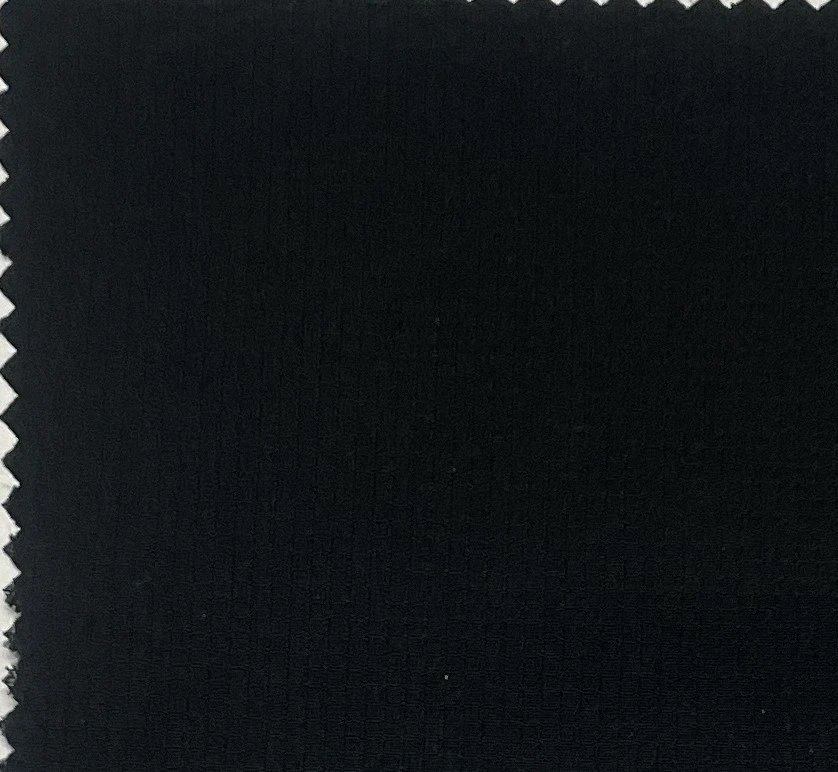
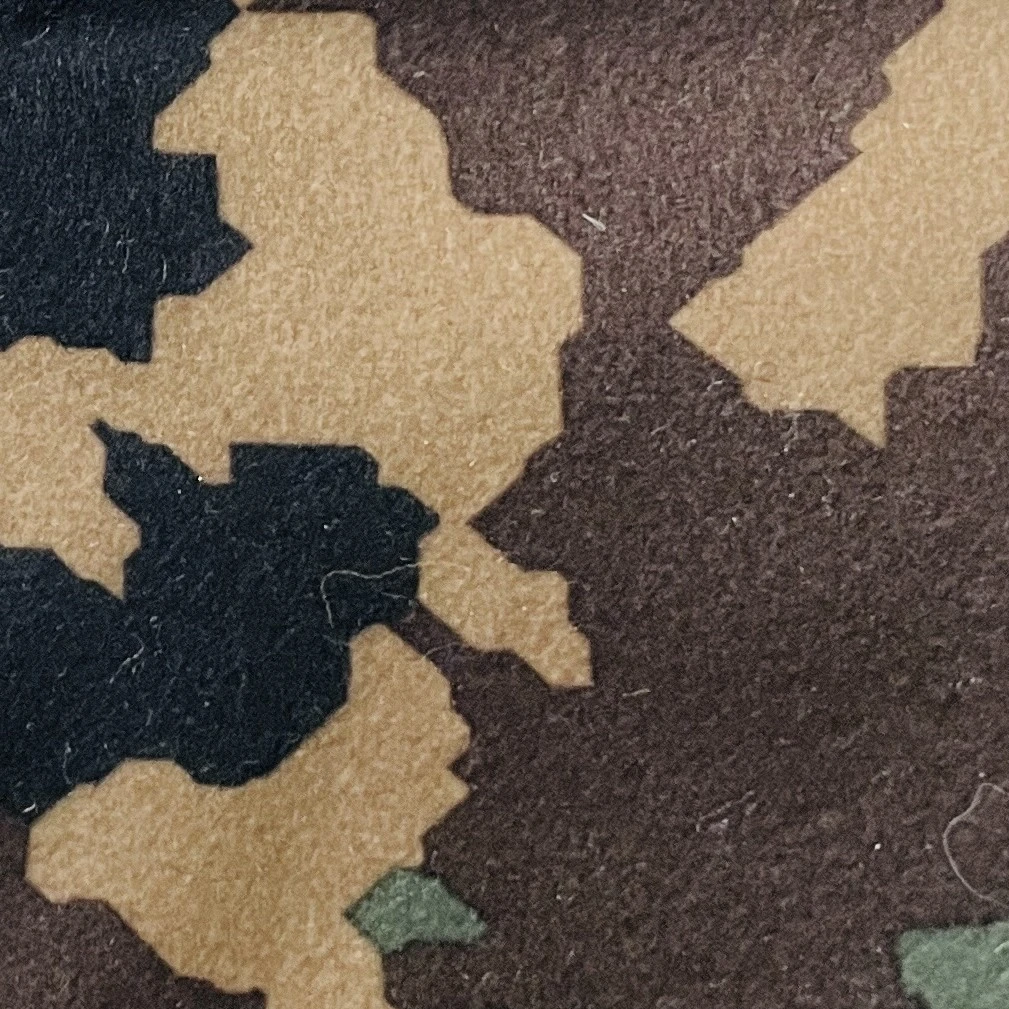
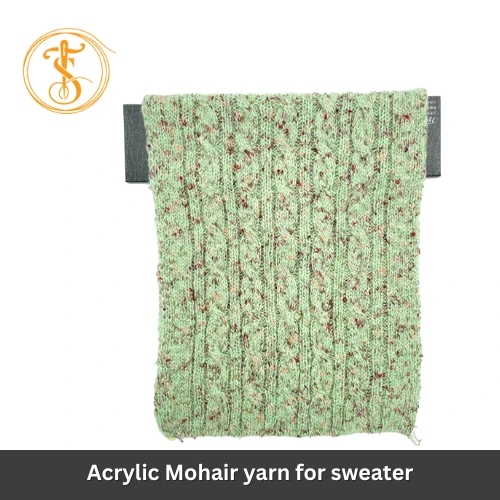
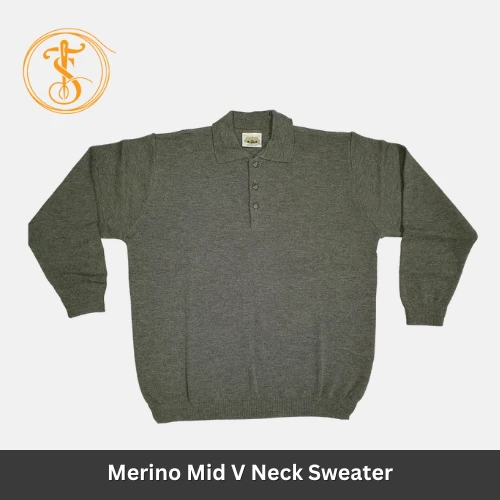

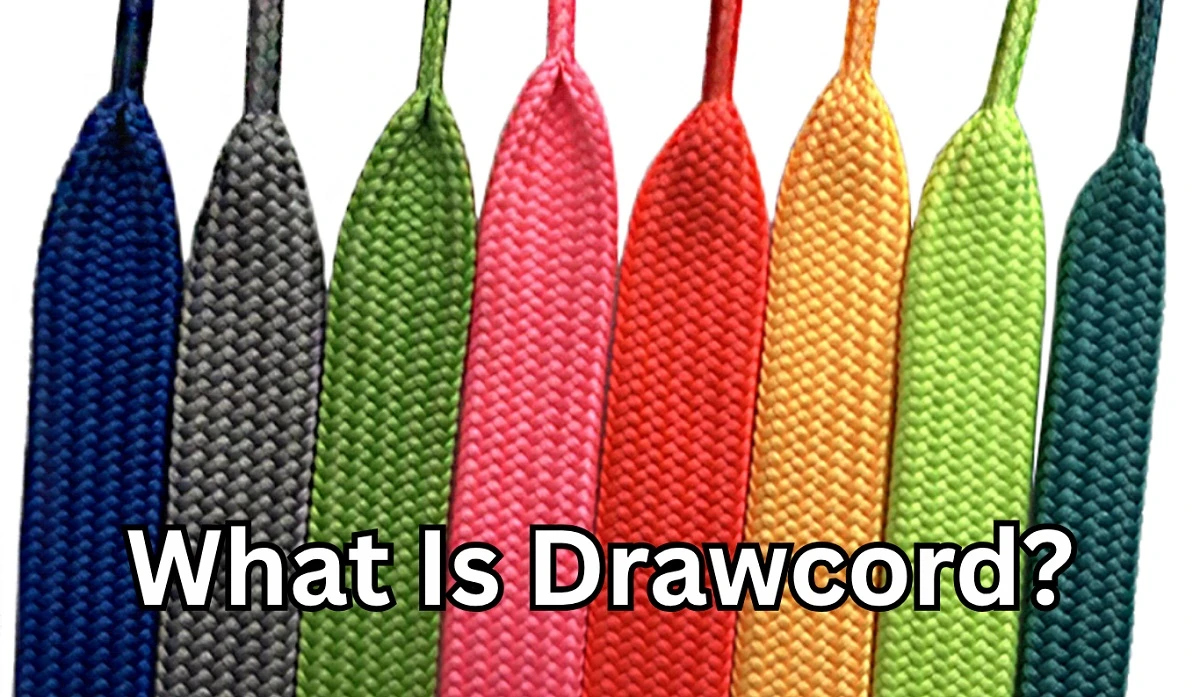

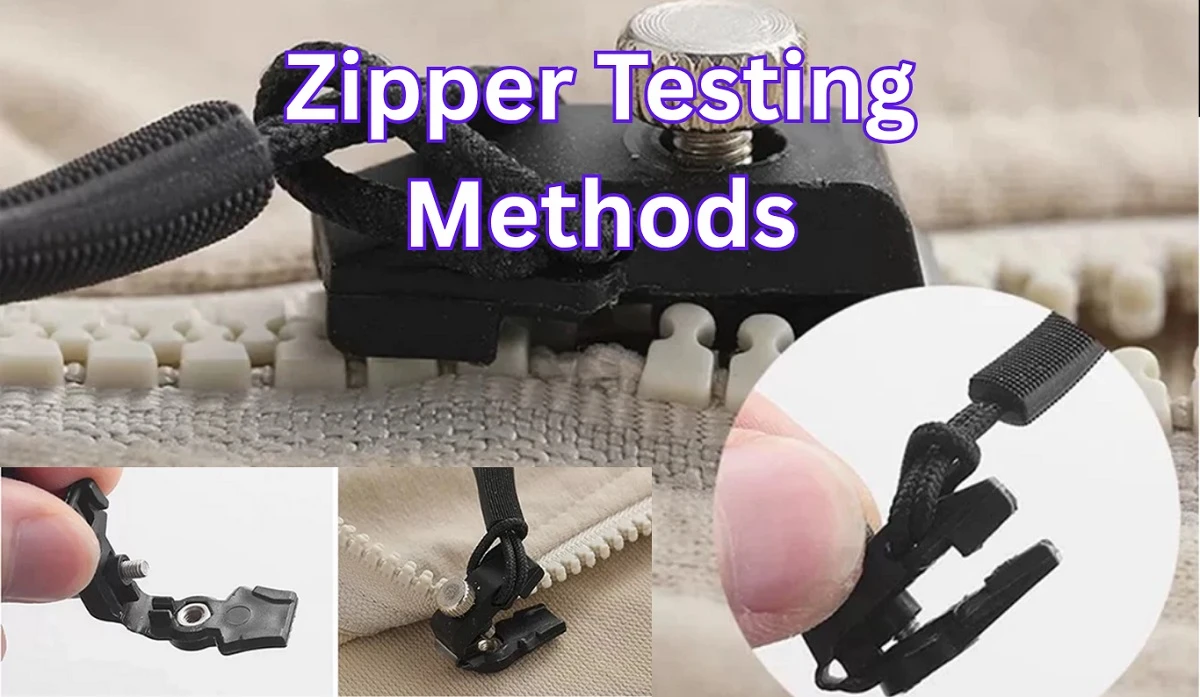


Comments - 00
Leave A Reply
Thanks for choosing to leave a comment.